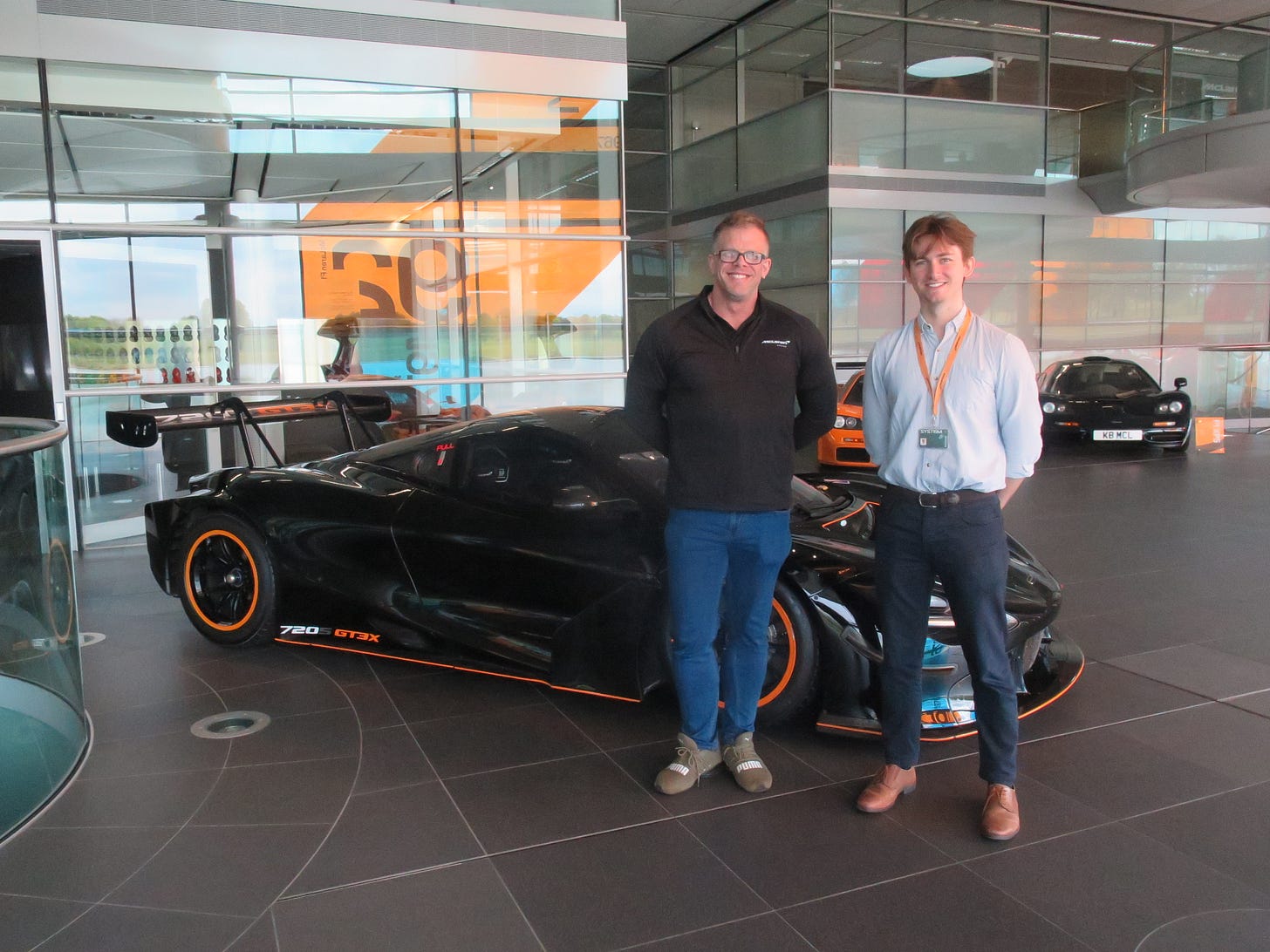McLaren Applied: the heritage and technological future of motorsports
‘’Most people don’t get to see this. I had to call in a few favours to get you to the MTC, so do your best not to make me look bad!’’ Marler laughs as he reaches out to shake my hand.
I’ve been invited to McLaren Applied in Woking to chat about their products, training academy, and what’s next for one of Britain’s most-recognised names in motorsport tech.

‘’F1 is the main thing everyone wants to talk about’’ Oliver tells me. ‘’Of course it’s exciting, especially as they add extra races around the world. But we also have big stakes in NASCAR, IndyCar, MotoGP and Formula E. E-sports is becoming something seemingly out of nowhere. Kids who have never even seen a real track before have driven amazingly first time out due to their experience in sim-racing games.’’
What most people don’t know is that McLaren Applied is completely separate to the McLaren Group after being bought out by Greybull in 2019. ‘’It’s been amazing to see the expertise here in data collection and analysis,’’ explains Joseph Butcher, McLaren Applied business graduate. ‘’Anything learned during motorsports development can be applied to so many different industries. We even make the antennas for 5G that’s going into trains.’’
Production remains at the McLaren Technology Centre, though the company is impartial, supplying sensors and other essential parts to Scuderia Ferrari, Mercedes AMG-Petronas and other teams alongside McLaren Racing. Their Electronic Control Unit (or ECU, for short) is at the heart of every Formula One car on the grid. ‘’It controls almost everything and can be linked to the Marshalling and Safety Car systems too. It really has made a huge difference in how reliable these cars are. We’ve actually never had an in-race failure since we started supplying them in 2008.’’ Back then, the FIA realised costs were growing for smaller teams. ‘’It was completely unsustainable. The regulations should mean closer racing. It’s hard to do that when you have teams with a far superior mechanical set-up.’’ ‘‘We’ve all seen last season’s results…’’ Marler laughs. McLaren Applied are contracted to supply their ECU directly to F1 until at least 2030.
I ask him what he thinks is the most important part of the role McLaren Applied plays in modern racing. ‘’Real-time strategy is what gets the car to the finish line. ATLAS is such a fun software, and there’s really nothing else like it.’’ he replies.
ATLAS – the Advanced Telemetry Linked Acquisition System – is another McLaren Applied product used by all ten F1 teams, and he’s right. The amount of information it can capture and analyse is beyond imagination. Want to see why one lap was a tenth quicker, even if it looked exactly the same? You have 600 different ways to compare them at the touch of a button. ‘’Analysts get asked about the race. They were at the back of the paddock looking at a screen the whole weekend - they didn’t see a single car!’’ Although ATLAS loads and converts the data, I can hardly believe the sensors that do the real monitoring. Take the Tyre Pressure Monitoring System (TPMS), a tiny thing weighing less than 50g which I can hold on one finger. ‘’They can tell you literally anything. If the driver turns too quickly, how the team has prepped the tyres, the ambient air temperature – masses of data available live just milliseconds after it happens.’’
The goal of the McLaren Applied Training Academy, set up by Marler himself, is to make sure that everyone has an equal chance to learn how to use McLaren Applied systems. ‘’The next step is introducing it into universities and schools,’’ he says. ‘’It’s a vicious cycle – teams want you to have product experience to land the role, but the only way you get the experience is by using it. With our courses, it doesn’t matter whether a client has just graduated or has worked with data for 30 years. We can start at the beginning or teach you the one skill you’ve been unable to grasp.’’
It’s a nice sentiment, and clear across the business as I visit the factory within the MTC. ‘’One of our best senior developers worked here originally as a cleaner. She helped out on an evening, teaching herself from the ground up how to hand craft each part.’’ Of course, not everything is now made exactly the way it has been for over 30 years. ‘’I’ve been here for 28 years and there a few more machines than we had back then, but mostly for testing reliability. We still make everything here personally.’’ There are hundreds, if not thousands of products, which each technician knows like the back of their own hand and is ready to make to order. It's easy to see, then, why McLaren Applied persist at the forefront of motor-racing technology.



